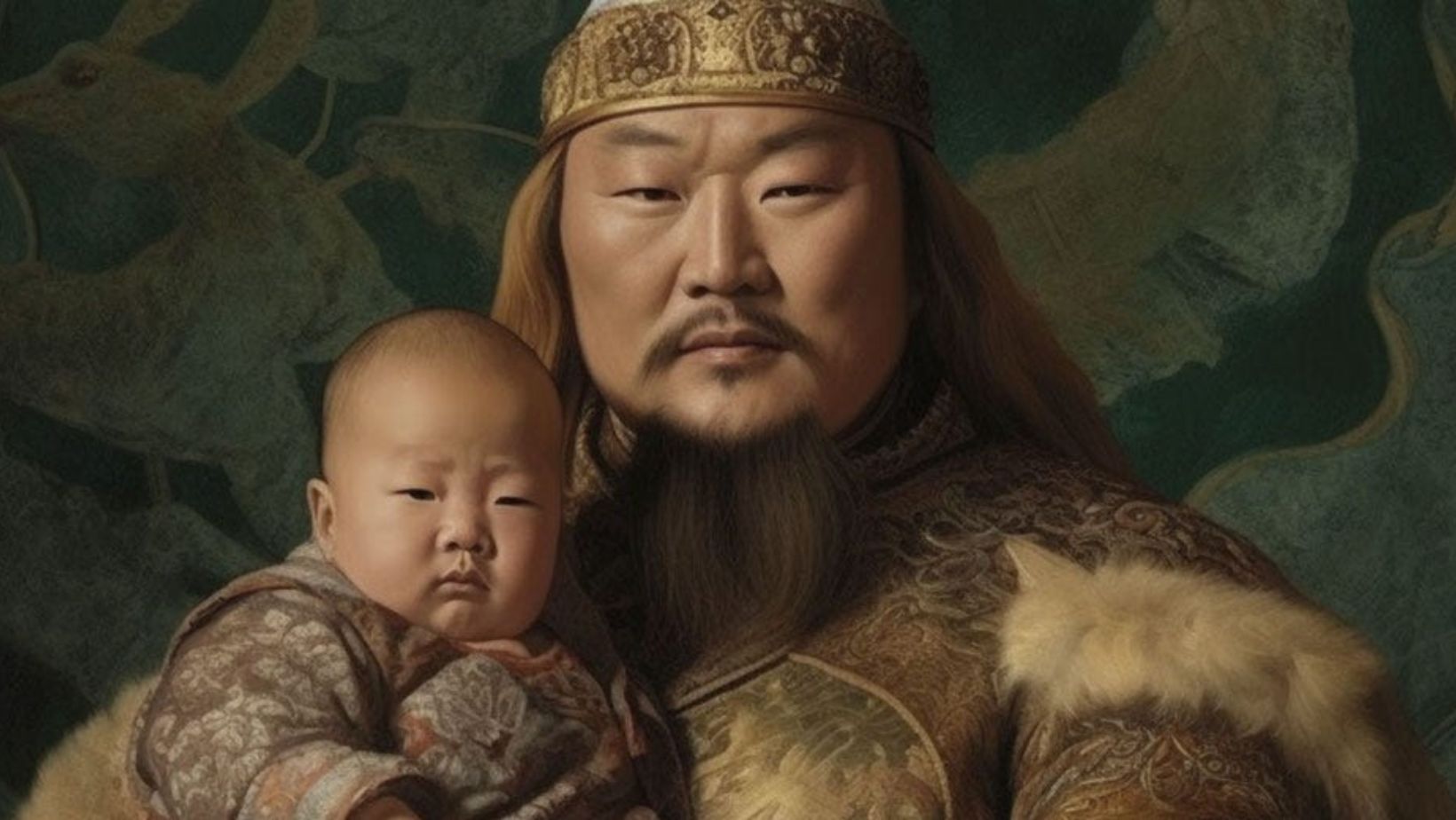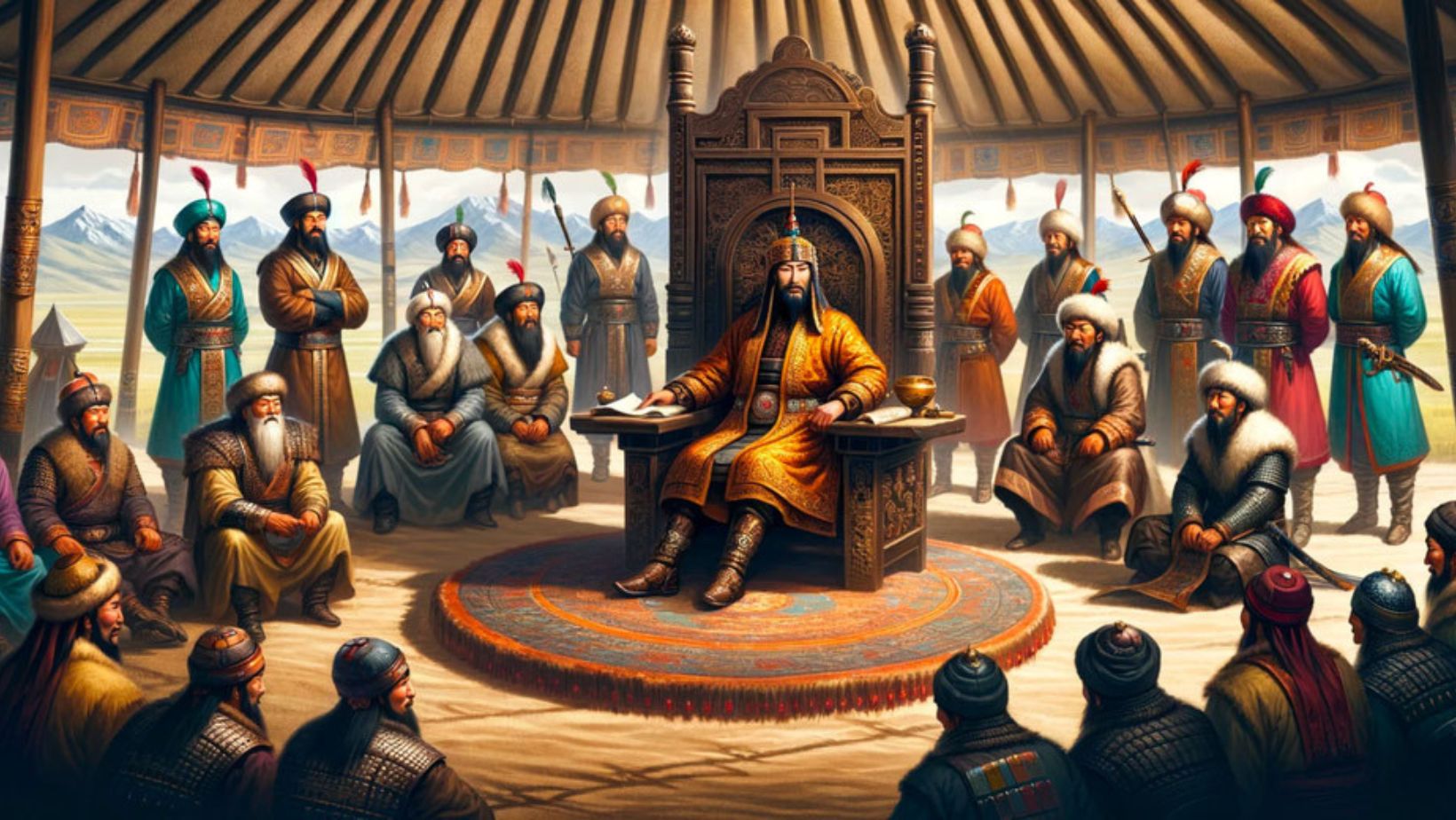The Mongol Empire, one of history’s greatest empires, rose from humble beginnings to dominate much of Asia and Europe. Led by Genghis Khan, stretching across vast landscapes from the steppes of Mongolia to the heart of Europe. Its influence reshaped borders, economies, and cultures. The Mongols’ military brilliance and strategic prowess allowed them to conquer massive territories, establishing the largest contiguous empire the world has ever seen. In this blog, we’ll explore how the Mongol Empire grew to such immense power, leaving a lasting legacy across continents.
The Visionary Leader: Genghis Khan

Genghis Khan, born as Temujin in 1162, rose from humble beginnings. He was the son of a Mongol chieftain, but his early life was marked by hardship. His father was poisoned when Temujin was young, leaving his family vulnerable. This experience shaped his determination to unite the Mongol tribes under one banner.
Through grit and strategic alliances, Temujin gradually united the fractured Mongol tribes. His leadership was focused on loyalty, discipline, and merit. He replaced tribal divisions with a strong sense of unity, consolidating power. His ability to adapt and form alliances was key to his success.
Genghis Khan’s military genius is legendary. He revolutionized warfare with innovative tactics, such as feigned retreats and effective use of cavalry. His army was highly disciplined and organized, which allowed them to conquer vast territories. Genghis Khan’s vision and military strategies set the foundation for the Mongol Empire’s expansion.
His leadership went beyond conquest. Genghis Khan implemented a legal code, promoted trade, and fostered cultural exchange. His ability to unify and lead effectively makes him one of history’s most visionary leaders.
The Conquests Begin: Expanding the Empire
The Mongol Empire’s expansion began with a series of successful campaigns led by Genghis Khan. In the early 13th century, Genghis targeted the Khwarezmian Empire, located in present-day Iran, Uzbekistan, and Turkmenistan. After an initial trade dispute, the Khwarezmian Shah executed Mongol merchants, prompting a swift and brutal invasion. The Mongols destroyed cities like Samarkand and Bukhara, decimating the Khwarezmian forces and leaving a lasting mark on the region.
Following the fall of Khwarezm, Genghis Khan turned his attention to China. The Jin dynasty, ruling northern China, faced Mongol raids that steadily weakened their defenses. The Mongols, employing siege tactics and military innovation, gradually conquered vast territories in China. Eventually, Genghis Khan’s forces would lay the groundwork for the Mongol Yuan Dynasty.
The Mongols expanded further into Central Asia and the Middle East. They invaded regions of Persia, the Caucasus, and parts of Russia, sweeping through with remarkable speed. The fall of Baghdad in 1258, a crucial event in the Middle Eastern campaigns, marked the end of the Islamic Golden Age. The Mongol Empire’s conquests reshaped entire civilizations across these regions.
The Role of the Mongol Army
The Mongol Army is known for its exceptional tactics and innovations in warfare, which played a key role in their success. One of their most notable strategies was the use of speed and surprise. The Mongols employed quick, mobile forces that could strike swiftly and retreat just as fast. This made it difficult for enemies to anticipate their movements or mount an effective defense.
The discipline of the Mongol cavalry was also crucial. Soldiers were trained to operate as a unified force, with strict adherence to orders. This discipline allowed them to perform complex maneuvers, even in the heat of battle. It ensured that the Mongol Army could execute strategies like encirclement and feigned retreats with precision.
Mobility was another key factor that set the Mongol Army apart. They utilized horses extensively, allowing their troops to cover vast distances quickly. This gave the Mongols the ability to launch surprise attacks on well-prepared enemies, often catching them off guard. The combination of mobility, discipline, and innovation made the Mongol Army one of the most formidable forces in history.
Mongol Governance and Administration
Mongol governance and administration were crucial in managing their vast empire. The Mongols established an efficient system of rule to govern diverse regions, ranging from China to Eastern Europe. They divided territories into smaller regions called “ulus,” each governed by a trusted leader, often from the Mongol elite. These leaders ensured stability by maintaining law and order while respecting local customs.
Meritocracy played a vital role in Mongol administration. Leaders were selected based on ability and achievements rather than noble birth. This allowed skilled individuals from various cultures to rise to important positions, ensuring competence across the empire. The Mongols valued loyalty and military success, using these qualities as key criteria for appointments.
Local leaders were also integral to the Mongol system. They helped maintain control over conquered peoples and territories. The Mongols allowed these leaders to retain their power as long as they supported Mongol rule. This strategy enabled the Mongols to govern vast areas efficiently, blending local authority with Mongol oversight.
Cultural Exchange Across the Empire
The Silk Road was a major trade route connecting the East and West, fostering cultural exchange. Goods like silk, spices, and precious metals flowed between empires, but ideas and technologies traveled just as widely. This exchange led to the spread of innovations such as paper-making, gunpowder, and new agricultural techniques. The movement of these technologies transformed societies along the route, boosting economies and enriching cultures.
Religious tolerance played a key role in blending diverse cultures. Empires like the Mongol Empire allowed various religious groups to coexist peacefully, fostering an environment for intellectual and cultural exchange. As traders, travelers, and missionaries moved along the Silk Road, they shared religious beliefs, art, and philosophies. This openness contributed to the fusion of different cultural traditions, leading to new forms of art, architecture, and literature.
The result was a rich, interconnected world where people from different backgrounds learned from each other. The legacy of the Silk Road is still visible today in the diverse cultures and technologies that emerged from this exchange. Religious tolerance and the free flow of ideas helped create a lasting impact that shaped the course of history.
The Successors: The Division of the Empire

After Genghis Khan’s death in 1227, his vast empire was divided among his sons and grandsons. This division led to the formation of several independent Khanates. These included the Golden Horde, Ilkhanate, Chagatai Khanate, and Yuan Dynasty. Each Khanate ruled a different region of the former Mongol Empire, but they shared a common Mongol heritage.
The Golden Horde controlled much of Russia, the Ilkhanate governed Persia, and the Chagatai Khanate held Central Asia. The Yuan Dynasty, established by Kublai Khan, ruled over China and Mongolia. The fragmentation of the empire allowed local rulers to gain power and influence. As a result, individual leaders emerged, carving out their own legacies.
Despite the division, the Mongol Empire’s influence continued to be felt across these regions. Many of the Khanates interacted through trade, culture, and military campaigns. However, the lack of central authority led to internal conflicts and power struggles. Over time, the once-unified Mongol Empire splintered into separate entities, each with its own trajectory.
The Decline of the Mongol Empire
The decline of the Mongol Empire was marked by internal strife and succession struggles. After the death of Genghis Khan, the empire was divided among his sons and grandsons. This division led to conflicts over leadership, weakening central authority. Rival factions emerged, each seeking control over different parts of the empire.
Decentralization played a crucial role in the empire’s fragmentation. As the empire expanded, its vast territories became harder to govern. The once-unified Mongol state split into separate khanates, each ruled by different leaders. This division made it difficult to maintain control and cohesion.
The loss of unity within the Mongol Empire further accelerated its decline. The khanates grew more independent, often engaging in wars with each other. This lack of coordination weakened the empire’s ability to defend against external threats. As a result, the Mongols lost key territories and influence over time.
Internal instability, succession issues, and decentralization contributed to the empire’s eventual downfall. The Mongols, once a dominant force, found it increasingly difficult to maintain control. Over the centuries, the empire fragmented into smaller, weaker states. This decline marked the end of the Mongol Empire’s global power.
The Legacy of the Mongol Empire

The Mongol Empire, founded by Genghis Khan in the early 13th century, left an indelible mark on world history. Their vast empire spanned from Europe to Asia, facilitating cultural exchanges and the spread of innovations. One of their key contributions was the Silk Road’s revitalization, fostering trade between East and West. This increased the exchange of goods, ideas, and technologies, shaping global commerce.
The Mongols also influenced geopolitics by uniting vast regions under a single administration. Their rule introduced more centralized governance, affecting military tactics and territorial organization. Many regions, such as China and Persia, saw advancements in infrastructure and bureaucratic systems due to Mongol policies. This administrative model laid the groundwork for future empires.
Culturally, the Mongols promoted religious tolerance, encouraging the spread of different beliefs across their empire. This openness led to the integration of various cultural practices, enriching societies from China to the Middle East. In addition, the Mongol impact on military strategy, especially their cavalry, revolutionized warfare.
Ultimately, the Mongol Empire’s legacy is a complex blend of cultural, economic, and geopolitical shifts. Their rule reshaped societies, created new global connections, and left a profound influence on world development.
Conclusion: Mongol Empire
The Mongol Empire, with its vast territorial reach and unparalleled military strategies, played a pivotal role in shaping the modern world. Its establishment of trade routes, such as the Silk Road, facilitated cultural exchange, spreading innovations, and ideas across continents. The Mongols’ legacy is evident in the rise of global commerce, diplomacy, and the spread of technologies that continue to influence societies today. As one of the largest empires in history, the Mongol Empire’s profound impact on both East and West underscores its monumental place in shaping global history and shaping the world we live in today.
FAQs
How did the Mongol Empire expand so rapidly?
The Mongol Empire’s rapid expansion was largely due to its advanced military strategies, skilled horsemen, and effective use of psychological warfare. Genghis Khan’s leadership and ability to unite diverse tribes also played a crucial role. The Mongols took advantage of the weakening states along their borders, such as the Khwarezmian Empire, and used speed and surprise to overwhelm their enemies.
What were some key achievements of the Mongol Empire beyond military conquest?
In addition to its military success, the Mongol Empire facilitated cultural exchanges between the East and West. The Silk Road flourished under Mongol rule, and they established a unified legal system, the Yassa, which contributed to administrative efficiency. The Mongols also supported trade, scientific exchange, and the spread of technologies like gunpowder and papermaking.
How did the Mongol Empire impact the societies it conquered?
The Mongols left a lasting impact on the societies they conquered, often introducing new administrative systems, promoting religious tolerance, and encouraging trade and cultural exchange. While some regions suffered from destruction, others experienced economic and cultural growth due to the stability and infrastructure improvements brought by Mongol rule.
What led to the eventual fragmentation of the Mongol Empire?
After Genghis Khan’s death, the empire was divided among his sons and grandsons, which led to internal divisions and conflicts. Additionally, the vast size of the empire made it difficult to govern effectively. Regional leaders gained more autonomy, and over time, the different khanates (such as the Yuan Dynasty in China and the Golden Horde in Russia) became more independent.
How did the Mongol Empire influence modern-day countries?
The Mongol Empire played a significant role in shaping the development of many modern-day countries. In Russia, the Mongols influenced the rise of the Tsarist state. In China, the Yuan Dynasty established by Kublai Khan had lasting effects on governance. The Mongols also had a profound impact on the Islamic world, Eastern Europe, and Central Asia, contributing to the cultural and political evolution of these regions.

